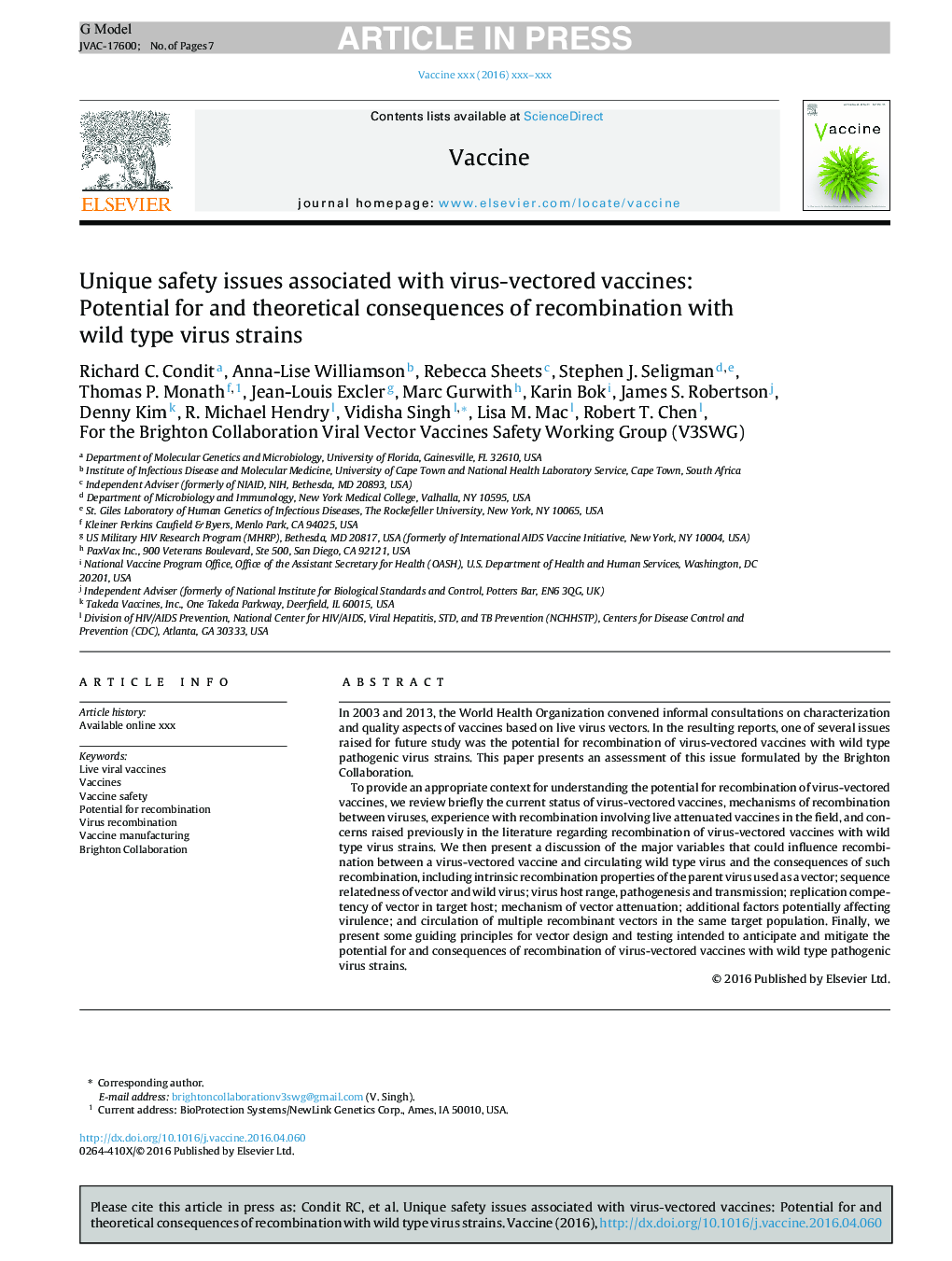| Article ID | Journal | Published Year | Pages | File Type |
|---|---|---|---|---|
| 5537624 | Vaccine | 2016 | 7 Pages |
Abstract
To provide an appropriate context for understanding the potential for recombination of virus-vectored vaccines, we review briefly the current status of virus-vectored vaccines, mechanisms of recombination between viruses, experience with recombination involving live attenuated vaccines in the field, and concerns raised previously in the literature regarding recombination of virus-vectored vaccines with wild type virus strains. We then present a discussion of the major variables that could influence recombination between a virus-vectored vaccine and circulating wild type virus and the consequences of such recombination, including intrinsic recombination properties of the parent virus used as a vector; sequence relatedness of vector and wild virus; virus host range, pathogenesis and transmission; replication competency of vector in target host; mechanism of vector attenuation; additional factors potentially affecting virulence; and circulation of multiple recombinant vectors in the same target population. Finally, we present some guiding principles for vector design and testing intended to anticipate and mitigate the potential for and consequences of recombination of virus-vectored vaccines with wild type pathogenic virus strains.
Related Topics
Life Sciences
Immunology and Microbiology
Immunology
Authors
Richard C. Condit, Anna-Lise Williamson, Rebecca Sheets, Stephen J. Seligman, Thomas P. Monath, Jean-Louis Excler, Marc Gurwith, Karin Bok, James S. Robertson, Denny Kim, R. Michael Hendry, Vidisha Singh, Lisa M. Mac, Robert T. Chen,
